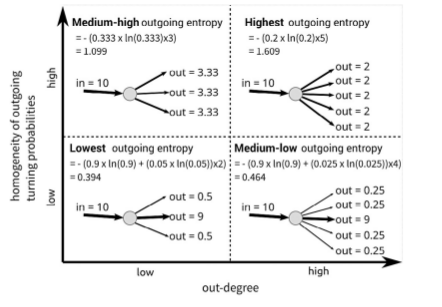
Paper
Wen, T. H., Chin, W. C. B., & Lai, P. C. (2017). Understanding the topological characteristics and flow complexity of urban traffic congestion, Physica A: Statistical Mechanics and its Applications. 473: 166-177.
Abstract
For a growing number of developing cities, the capacities of streets cannot meet the rapidly growing demand of cars, causing traffic congestion. Understanding the spatial–temporal process of traffic flow and detecting traffic congestion are important issues associated with developing sustainable urban policies to resolve congestion. Therefore, the objective of this study is to propose a flow-based ranking algorithm for investigating traffic demands in terms of the attractiveness of street segments and flow complexity of the street network based on turning probability. Our results show that, by analyzing the topological characteristics of streets and volume data for a small fraction of street segments in Taipei City, the most congested segments of the city were identified successfully. The identified congested segments are significantly close to the potential congestion zones, including the officially announced most congested streets, the segments with slow moving speeds at rush hours, and the areas near significant landmarks. The identified congested segments also captured congestion-prone areas concentrated in the business districts and industrial areas of the city. Identifying the topological characteristics and flow complexity of traffic congestion provides network topological insights for sustainable urban planning, and these characteristics can be used to further understand congestion propagation.
Read article here:
- Official website: Understanding the topological characteristics and flow complexity of urban traffic congestion, Physica A: Statistical Mechanics and its Applications,
- ResearchGate: Abstract and full text (on request or downloadable directly),
- Please contact me (by Gmail ).
